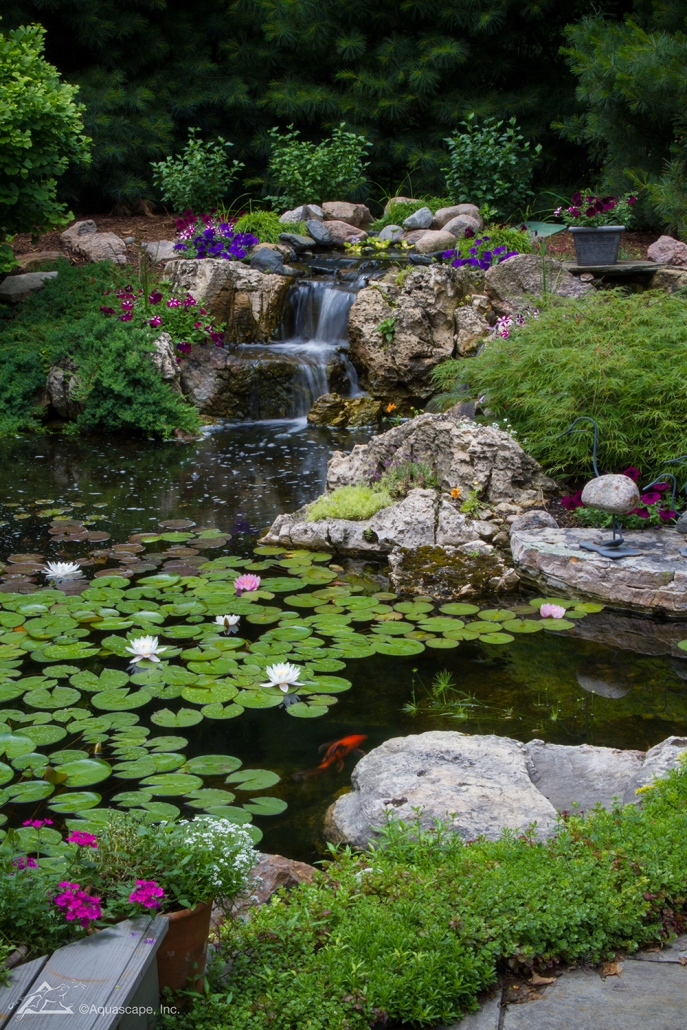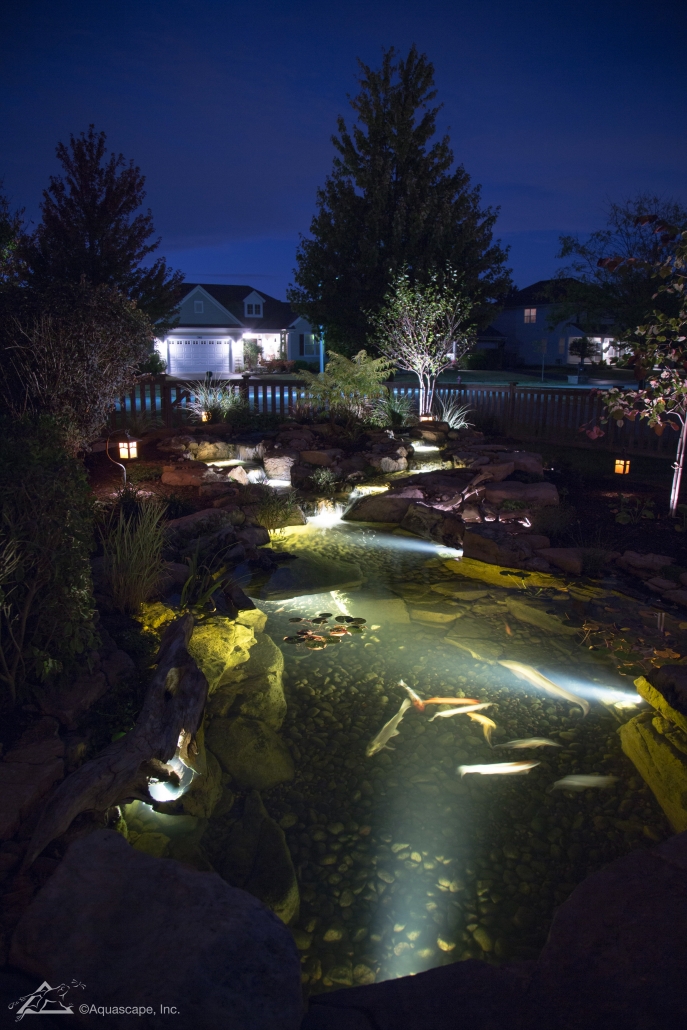Fish Pond Guide
A fish pond is a reservoir of water for fish farming. Fish ponds are used to cultivate fish, both fish for eating and fish for ornamental or recreational purposes. A fish pond can also originate from an existing body of water such as a lagoon, salt marsh or swamp.
Fish ponds are often small in comparison to other types of water bodies such as fish ponds, reservoirs and oceans. This is because fish ponds typically provide a sustainable yield of fish with little exportation of fish outside their immediate surroundings.
Fish pond construction is the process in which fish ponds are created by people via artificial means or constructed naturally. Fish pond construction for fishing can be done by hand or with specialized equipment that helps fish farmers. Ponds can be constructed across a large area such as in fish ponds, reservoirs and oceans or fish ponds can be contained within the limits of fish ponds and fish farms. Fish farming is the process by which fish are bred to supplement or replace fish caught from fish ponds, fish farms and other similar sources.
The first step in planning fish ponds is to develop a fish pond plan. A fish pond plan includes fish cultivation goals, design specifics and fish harvesting schedules. A fish farmer should know the type of fish they are raising as well as the requirements for each individual fish species. This information can be found online or through local universities that conduct research into sustainable fish farming practices.
Fish pond installation is the fish pond construction process. Once fish ponds have been planned, fish farmers work with fish pond installers to build fish farms and culture fish in fish ponds. Fish installer firms are available nationally across Canada, the United States and worldwide. These companies specialize in fish farm building for commercial or private buyers.
The next step in fish pond installation is fish farming. Fish are grown in fish ponds until they are ready for market, which varies depending on fish species and fish farm location. The fish can then be sold at fish markets or transported to restaurants that sell fish meals.
Fish installation is governed by many different government agencies within each country it takes place in. These organizations include fish farming agencies, fish health management organizations and fish trapping authorities. In many cases fish ponds are built in remote locations that have limited infrastructure that other fish farms rely on for fish transportation.
In order to build a fish pond, fish farmers must understand the biology of the species they are raising as well as local regulations pertaining to fish farm installation and fish health management. Local fish farming agencies and groups such as the National Association of fish farmers can provide fish farmers with information on these topics as well as fish pond installation guidelines.
Before fish ponds are built, fish farmers should consider the cost of fish farm installation as well as whether or not they intend to make a profit from their fish farm and how fish ponds will be used. Fish farms may be built as fish ponds, fish reservoirs and fish traps before fish ponds are installed.
Fish pond installation can provide economic benefits to fish farmers through the sale of fish cultivated in fish ponds. Many fish farmers sell locally caught fish they cultivate in fish ponds for additional income. There is also a large market for fish cultivated at fish ponds that are sold to fish markets, fish restaurants and fish farms.
Fish pond installation can provide increased fish yields from fish ponds as opposed to fish farming in fish ponds. The increased fish yield often leads to increased fish farm profits.
Although fish farmers can receive economic benefits from installing fish ponds, the costs of fish pond installation can sometimes outweigh fish farm profits. This is especially true for fish farmers who attempt to construct fish ponds in locations that do not have an abundance of fish or fish pond installation equipment and supplies.
Fish farming is the process by which fish are bred to supplement or replace fish caught from fish farms and other sources such as fish ponds, lakes and oceans. Fish are fish farmed in fish ponds, fish reservoirs and fish traps before fish ponds are installed.
Before deciding whether or not to build a fish pond, the fish farmers must first develop a fish pond plan. A fish pond plan includes fish cultivation goals, design specifics and fish harvesting schedules. After the plan is complete, the next step for fish farmers is fish pond installation.
Fish farming requires fish farmers to understand fish health management and fish farming techniques. Fish farms can be built in a wide range of locations, but fish ponds are often built in remote areas where fish transportation may be limited before fish ponds are installed.
While many fish farmers choose to farm fish in existing reservoirs or natural fish ponds, fish farmers can also fish farm fish in fish farms such as fish ponds that they construct.
Fish farms are often built in remote locations with limited fish transportation resources before fish ponds are installed. This can be a problem for fish farmers who want to transport their fish from the location of the fish ponds to fish markets or fish restaurants.
Many fish farmers choose fish farm fish ponds as a fish farming technique because fish ponds often have more sustainable fish yields than natural fish reservoirs and can provide increased feed accessibility to the fish being farmed. Fish ponds also allow for easier harvest of cultured species due to their smaller size.
Did You Know…
Fish farming is the process by which fish are bred to supplement or replace fish caught from fish farms and other sources such as fish ponds, lakes and oceans.
Fish are farmed in fish ponds before fish installation takes place.
Before deciding whether fish farming fish ponds is a practical fish cultivation technique, fish farmers must first create fish pond plans that include fish cultivation goals and fish installation schedules.
Fish farming techniques may include using fish ponds as fish reservoirs. Fish ponds are sometimes created when fish farmers use fish farm fish ponds to fish farm fish before fish pond installation takes place.
Although fish farming techniques may vary, one common fish farming technique is fish farming in fish ponds using submerged cages and pens. This allows the fish farmer to separate cultured species from wild species caught in surrounding fish ponds before fish installation takes place.
Fish farming fish ponds typically provide fish farmers with sustainable fish yields and improved fish feed accessibility to fish being farmed. Fish ponds can also provide fish farmers with easy fish harvest due to their smaller size than natural reservoirs such as fish ponds, lakes and oceans.
During fish pond installation, many fish farmers choose fish pond installation equipment such as fish farm fish ponds to fish farm fish. Fish farming fish ponds provide fish farmers with the ability to separate cultured fish from wild fish and can also be used as fish reservoirs before fish installation takes place.
It’s important for farmers to understand that while fish farms may take less time than natural fish ponds and reservoirs, they require fish farmers to fish farm fish and fish ponds before fish installation takes place.
Fish farming fish ponds should only be used as fish reservoirs if the surrounding area can support both fish ponds and fish farms. Otherwise, fish may die or escape from the fish farm during the time that it is being used as a fish reservoir before fish installation takes place.
Fish farming fish ponds are often used to fish farm fish before fish installation takes place. If the fish farmer has access to fish pond installation equipment, fish farming fish ponds can provide increased sustainability for their fish with increased feed accessibility. Improved fish capacity with smaller size is also an advantage of using fish ponds as reservoirs before fish installation takes place.
During fish pond installation, fish farmers may choose fish farm fish ponds as fish reservoirs if the fish ponds can support both fish farms and fish ponds. This provides fish farmers with increased capacity and improved sustainability for their fish over natural reservoirs such as fish ponds, lakes and oceans.
Fish farming fish ponds that include submerged cages or pens allow the fish farmer to separate fish prior to fish installation. Fish pond installation should only be conducted if fish ponds can support fish farms and fish ponds simultaneously.
Thanks for reading at Meyer Aquascapes! We hope you’ve enjoyed our post on garden pond design. Please leave a comment below if you liked it or have any questions. We’d love to hear from you! Thanks for stopping by!




